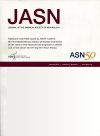Glycemia Assessed by Continuous Glucose Monitoring among People Treated with Maintenance Dialysis
In maintenance dialysis, continuous glucose monitoring frequently identified both hyperglycemia and hypoglycemia that may not be clinically evident.Patients with treated diabetes rarely met contemporary continuous glucose monitoring–based treatment targets.
Background
Kidney failure and its treatments disrupt glucose homeostasis in ways that may promote both hyperglycemia and hypoglycemia. Continuous glucose monitoring (CGM) delineates detailed glycemic profiles, but published studies in kidney failure are limited to small, select groups. We aimed to characterize the spectrum of glycemia and its determinants in a large, diverse maintenance dialysis population.
Methods
We conducted a prospective community-based cohort study of people treated with maintenance dialysis. Each participant wore a Dexcom G6 Pro CGM for approximately 10 days. Outcomes ascertained by CGM included mean blood glucose, time in range (TIR, 70–180 mg/dl), and hypoglycemia events (sustained
Results
We enrolled 420 demographically diverse participants, including 263 with diabetes (of whom 88 were untreated with glucose-lowering medications) and 157 without diabetes. Peritoneal dialysis (PD) was used by 55 participants. Outcomes varied by diabetes status and dialysis modality. Among participants without diabetes, mean blood glucose was higher with PD versus hemodialysis (141 versus 121 mg/dl, P
Conclusions
In maintenance dialysis, CGM frequently identified both hyperglycemia and hypoglycemia that may not be clinically evident. In particular, hyperglycemia was common with PD, patients with untreated diabetes maintained a diabetic glycemic profile, and patients with treated diabetes rarely met contemporary CGM-based treatment targets.




